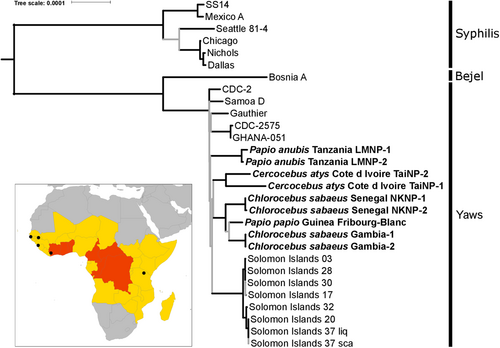Figures & data
NHP-infecting Treponema pallidum strains are indicated in bold. In this maximum likelihood tree, nodes with less than 95% bootstrap approximation support are indicated with gray lines. Tip labels indicate the NHP species sampled, the country of origin, and the sample ID. The scale is in nucleotide substitutions per site. The inset is a map of Africa showing the sites of origin of NHP samples from which a TP genome was determined (indicated with black circles). The 2013 yaws status of countries, based on the World Health Organization’s Global Health Observatory (http://www.who.int/gho/en/), are indicated by color: gray indicates no previous history of yaws infections in humans, yellow indicates a country previously endemic for yaws for which the current status is unknown, and red indicates countries that are currently considered endemic for yaws

